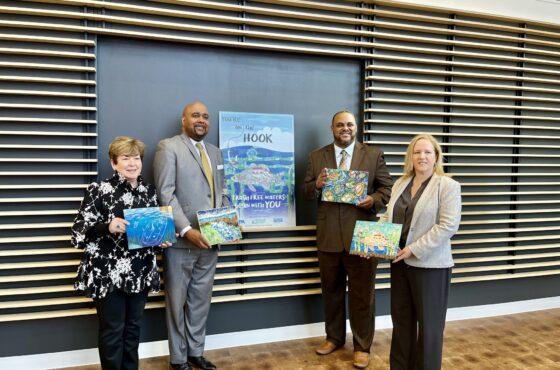Alexander Camelton Gets Lots of Zoo Love, but It Could Be Curtains for His Wild Kin
Published by the Natural Resources Defense Fund

Asem Mongolia
Chicago’s Lincoln Park Zoo welcomed the birth of a Bactrian camel in May. Despite much fanfare, the event was not uncommon. Around seven million Bactrian camels live in captivity around the world. In fact, you probably heard about this particular camelet only because in a stroke of social media genius, the zoo named the newborn Alexander Camelton, in honor of Lin-Manuel Miranda’s record-torching Broadway play.
With its two humps, the Bactrian camel is probably not what pops to mind when you think camel. The more common, one-humped variety is the dromedary, a species long ago domesticated. For centuries, dromedaries have been our all-terrain desert vehicles and even instruments of war. Today the species remains popular as a racing animal, beauty queen, and Pauly Shore costar.
Dromedaries went extinct in the wild approximately 2,000 years ago. If something doesn’t change soon, their two-lump cousins will join them.
Alexander Camelton’s kin once roamed from central China all the way to Kazakhstan, but collectively, wild herds contain a little more than 1,000 members today. They live in a few remote pockets of the Gobi Desert in China and Mongolia, and the International Union for Conservation of Nature considers the species critically endangered—a designation more dire than that of the giant panda.
The most recent estimates, conducted by conservationist John Hare, put Bactrian numbers in China’s Lop Nur region at 600, while some 450 of the animals persist to the north in Mongolia. Gold-mining activity is the biggest threat to China’s wild camels. It disrupts the fragile desert ecosystem and poisons water sources, which are already extremely few and far between, with arsenic, lead, mercury, petroleum by-products, acids, and cyanide. Miners also shoot the camels for food, as do herders who see these grazing animals as competition for their domestic camels and other livestock. In Mongolia, wild camels face an additional threat: predation by gray wolves.
According to the IUCN, the existence of fewer clean-water sources forces more thirsty camels to collect in a single spot. Wolves have an easier time picking one off, and killings are on the rise.
So why not send Alexander Camelton and those like him back to the Gobi to give the wild herds a boost? If only it were that simple. Wild and captive Bactrians have been apart so long that the IUCN lists them as separate species. Genetic testing conducted in 2008 found that the DNA of the two remaining wild camel populations is significantly different from the DNA of captive Bactrians. For reference, the dissimilarities are more than twice as pronounced as those between humans and chimpanzees. Intermixing, however, still remains a problem with domestic and wild camels living in close proximity in the Gobi.
This is why John Hare is doing something nobody else is: breeding wild camels in middle-of-nowhere Mongolia and returning the to the desert. The initiative began in 2004 with just 12 individuals captured by herdsmen. Today, Hare says there are 25.
But raising camels is no easy feat. First, the animals are rather slow-breeding, popping out just one calf every two years at the absolute fastest reproductive pace. It also takes three to six years for males to reach reproductive maturity. And when they do, it presents other problems because they start beating the spit out of each other, along with their fence enclosures, the buildings that house them, and the herdsmen who tend to them. Thus, as soon as the young lads start getting antsy in the pantsy, into the wild they go.
Fancy fertility techniques are not available to the breeders, says Hare. The area is so remote, it doesn’t even have access to e-mail, let alone embryo transplants.
Despite these hurdles, Hare’s nonprofit, the Wild Camel Protection Foundation, released two young males into the Gobi in 2013. In October 2015, it released another six. So far Hare’s dedication seems to be paying off. One of the released males turned up on a camera trap in the company of three females. Not only had he not been eaten by wolves or sniped by a poacher, the bull had attracted a harem, a sign that the young camel was adjusting well to life in the wild desert.
After all, the wild camel is a survivor. It makes its living in an arid, inhospitable desert where temperatures can range from –40 degrees Fahrenheit in the winter to 131 degrees in the summer. There is little to no freshwater in the Gobi, and the animals somehow evolved a way to ingest the saltwater slush that accumulates in shallow pools—a slurp with higher salinity than the ocean.
Clearly, wild camels have overcome more than their fair share of adversity. Whether they continue to persevere is up to better legal protections and the vision of conservationists like John Hare. For as Hamilton muses in Miranda’s play, betting on the future is always an exercise in the abstract: “Legacy. What is a legacy? It’s planting seeds in a garden you never get to see.”
onEarth provides reporting and analysis about environmental science, policy, and culture. All opinions expressed are those of the authors and do not necessarily reflect the policies or positions of NRDC. Learn more or follow us on Facebook and Twitter.
Read the full article at: https://www.nrdc.org/onearth/alexander-camelton-gets-lots-zoo-love-it-could-be-curtains-his-wild-kin


